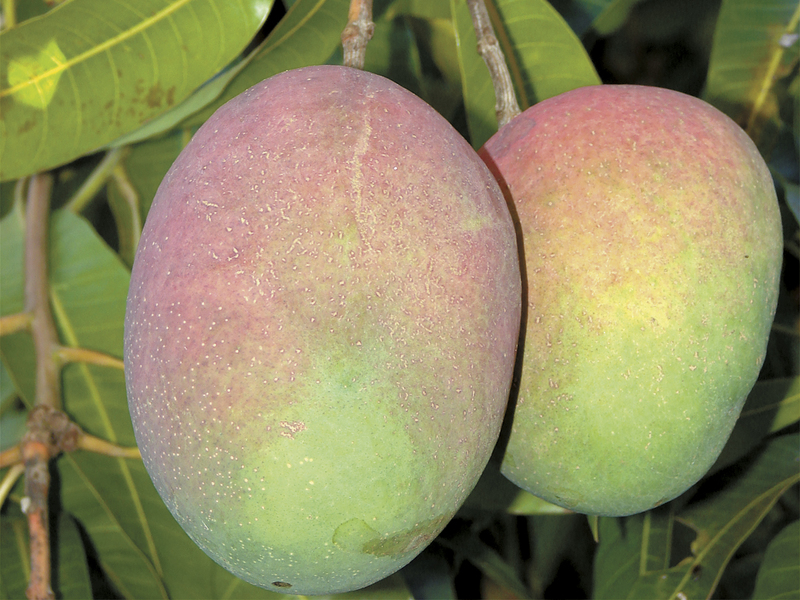An old saying goes, “Time flies like an arrow; fruit flies like a banana.” The most popular fresh fruit in the United States isn’t apples or oranges but the tropical banana, probably because bananas are available year round. However the most popular fruit in the world isn’t the banana, but a tropical fruit that has been cultivated for over 4,000 years: the mango (Mangifera indica).
So how can non-tropical gardeners grow mangoes? Luckily, there are dwarf mango varieties that are ideal for pots. The Pickering mango grows fruit that weigh up to 1.5 pounds with a delicate coconut mango flavor that almost tastes like a pina colada.
This mango is a bushy tree that is ideal for growing in a pot. It sets fruit in a container as small as an 8-inch pot. Unlike many other mangoes, Pickering mango seems nearly free of diseases. Pickering will bloom in late winter on into spring with the fiber-free fruits forming during the summer.
Another small mango tree suitable for growing in pots is Ice Cream mango. It is originally from the Caribbean islands Trinidad and Tobago but is so easy to grow it is one of the most popular mango varieties for growing in pots. It can be trimmed to stand under six feet tall, making it ideal for the patio.
As the name implies, this mango tastes like ice cream or more like mango sorbet. The smallish, half-pound fruits are completely free of fiber and ripen from June to July. Unlike many other mangoes, Ice Cream never get a red blush but remain yellow-green even when ripe. Ice Cream mangoes, like all mangoes, are high in vitamin C and vitamin A.
Mangoes that grow well in pots are available from Pine Island Nursery (www.tropicalfruitnursery.com, 16300 SW 184 St., Miami, FL 33187, phone 305-233-5501), Plant-O-Gram Inc. (www.PlantOGram.com, P.O. Box 1173, Windermere FL 34786-1173, phone 877-378-4836) and Logees (www.logees.com, 141 North St., Danielson, CT 06239, phone 888-330-8038).
Pot your mango tree into as large a pot as you can handle. Use a potting soil with a pH range of 6 to 6.5. See that it gets as much sun as possible; a south-facing window is ideal.
Good humidity is important, so aim for relative humidity of 50 percent or higher. Mist the plants daily and set the pots on trays of pebbles in water. Don’t let the bottom of the pot soak up the water; the water is just there to evaporate and increase the relative humidity.
Water when the top 2 inches of soil feels dry. Water thoroughly until water comes out the bottom of the pot. You may want to consider pots or containers on wheels for easier moving. Your mango will love a summer on the patio or in a protected area of the garden as long as it can get at least six hours of direct sunshine every day. Bring it indoors before the temperatures drop. Because mangoes are tropical fruits, try not to let them get chilled below 60° F.
When your plants are actively growing in spring and summer, feed them with a soluble houseplant fertilizer diluted to half strength. You will only need to prune your potted mango to keep it at a manageable height. Since flower buds form on last year’s growth, any branch you prune will have to grow a full year before fruiting. Mangoes do not like “wet feet,” so be sure your soil drains easily. Clay pots tend to breathe more than other pots and are easier to monitor for water and fertilizer. It’s best to go easy on both water and fertilizer to prevent root rot.
With lots of light, warmth and minimal watering you will see fruits develop when your mango plants are 3 feet tall. Pot up Pickering or Ice Cream mango trees and not only will you have an unusual houseplant but a nice heirloom, because a mango tree can produce fruit for up to 300 years. Not bad for the most popular fruit in the world. How do you like them bananas?



















































